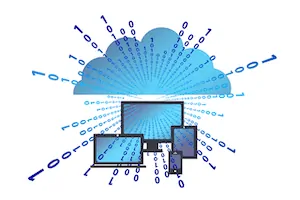Consumer demand is rising in just about every conceivable industry. Customers want their products better, faster, and stronger; and as they adopt this mantra of “more, more, more”, companies have to keep up. In order to do that, they would have to make some drastic improvements or outright changes in the way they do business through industry innovations – particularly in the supply chain.
Just as advances in Internet-based platforms are improving the way people connect, communicate, and consume, advances in telecommunications, automation, robotics, and information technology are giving industries more power to control, oversee, and optimise their businesses to meet ever-growing demand.
It is no surprise, then, that the latest technologies are the cornerstone of business innovations for the foreseeable future. In this article, we will be taking a look at some of these innovations that are trending among companies and seeing how newer businesses can integrate them into their systems.
Cloud Computing
Most people have probably already heard of “cloud services” – particularly cloud storage services, which let you upload and store digital files in spaces on server hard drives that you can access wherever and whenever you have access to the Internet.
However, cloud servers can do a lot more than store files; as servers themselves are practically computers, companies that own and operate a large number of these server computers (stored in facilities called server farms) now offer cloud computing services, which allocate a portion of the server’s processing power to businesses who wish to use it for business transactions and general operations.

Cloud computing services can be incredibly useful to small businesses or companies whose employees are located in various locations around the world.
Since these sorts of companies would need to communicate over the Internet often, taking advantage of cloud computing can actually save the company a lot of money by reducing investment allocations towards computer hardware, which itself requires its own department for hardware maintenance and technical support.
Consumers can also take advantage of cloud computing through services provided by data companies such as Amazon Web Services, Google Cloud, and the like. These consumer-grade cloud computing services give customers access to a portion of the company’s computing power from their servers, as well as a set of software applications for you to use for your research, data storage, and more.
Predictive Analytics
With the response time requirements of clients in various industries getting shorter and shorter, having a reactive approach to inventory – that is, moving inventory around when orders come in – is no longer fast enough. To cope with this, companies are now employing predictive analytics to get the job done.
Predictive analytics takes the statistical data collected from, say, customer purchases, and accumulates them over time to generate a profile that shows what products have high, low, constant, or fluctuating demand, and where that demand is coming from. This data allows companies to make better and more informed decisions, such as arranging inventory in such a way that reduces delivery time to regions that have high demand for those products.
Artificial Intelligence
When most people think of artificial intelligence, we might think of powerful, automated systems like Skynet, and although the greatest AI systems we’ve developed likely won’t reach that sort of level in the foreseeable future, we can still enjoy the benefits of a less advanced artificial intelligence.
Companies nowadays are looking to integrate autonomous systems into production machinery to allow it to work on its own, communicate and cooperate with other machines, and learn how to make low-level decisions without the need for constant human supervision. Australia post actually ran trials on a robotic delivery system, due to huge demand created by online shopping.
Next-Shoring
In an interesting turn of events, companies are now looking to reopen production facilities in their home countries in a move called “next-shoring”.
Spurring this trend are various factors that are making current off-shore production schemes less and less viable – for example, wages are rising in the countries often utilised for cheaper labour; costs of technology are decreasing, making automated factory floors more financially viable to more companies; and the increasing demand for faster product delivery is encouraging companies to move production facilities closer to the customers.
Industry 4.0
Of all of the innovations mentioned in this article, Industry 4.0 is arguably the most powerful and widest-reaching. After all, Industry 4.0 is not a unitary innovation – rather, the term was coined as a way to describe the new wave of innovations that are slowly being incorporated into supply chains to improve business processes. In other words, it encompasses all of the technological advancements that are slated to power the businesses of the future.
One of the primary facets of Industry 4.0 include the optimisation of existing computer-based systems through the implementation of technologies such as the Internet of Things – a network that extends Internet connectivity to otherwise non-Internet capable machines, allowing them to collect data and share it with other machines in the network, or relay the data to human operators.
The machines’ use of data is another component of Industry 4.0 called “big data”. The big data trend emphasises the collection of massive amounts of information that can be analysed using theoretical models to gain valuable insights into aspects of the business like production line statuses, trends in customer demand, and more. Predictive analytics, therefore, is also included in the big data trend.
Artificial intelligence is also an important part of Industry 4.0, as machines won’t be able to put the data it collects or its ability to communicate with other machines to good use without the level of intelligence and autonomy needed to perform such tasks.
AI technology, then, ties the Industry 4.0 package together, facilitating the collection of data from aspects of the production process in real time, the analysis of large data sets through neural networks and complex algorithms, and the presentation of this data to human management to assist in higher-level decision making.
Industry Innovations in Conclusion
As powerful and as game-changing these innovations are, companies still have a lot to think about before deciding to adopt them into the company ecosystem, one of the biggest concerns of which is the cost.
The Internet of Things and AI-enhanced machinery are potentially a lot more useful, but they no doubt will require a significant investment before the technologies can have a noticeable impact in the business.
Whatever happens, the goal of all of these industry innovations is to secure the bottom line, make processes safer, and serve the customer.

